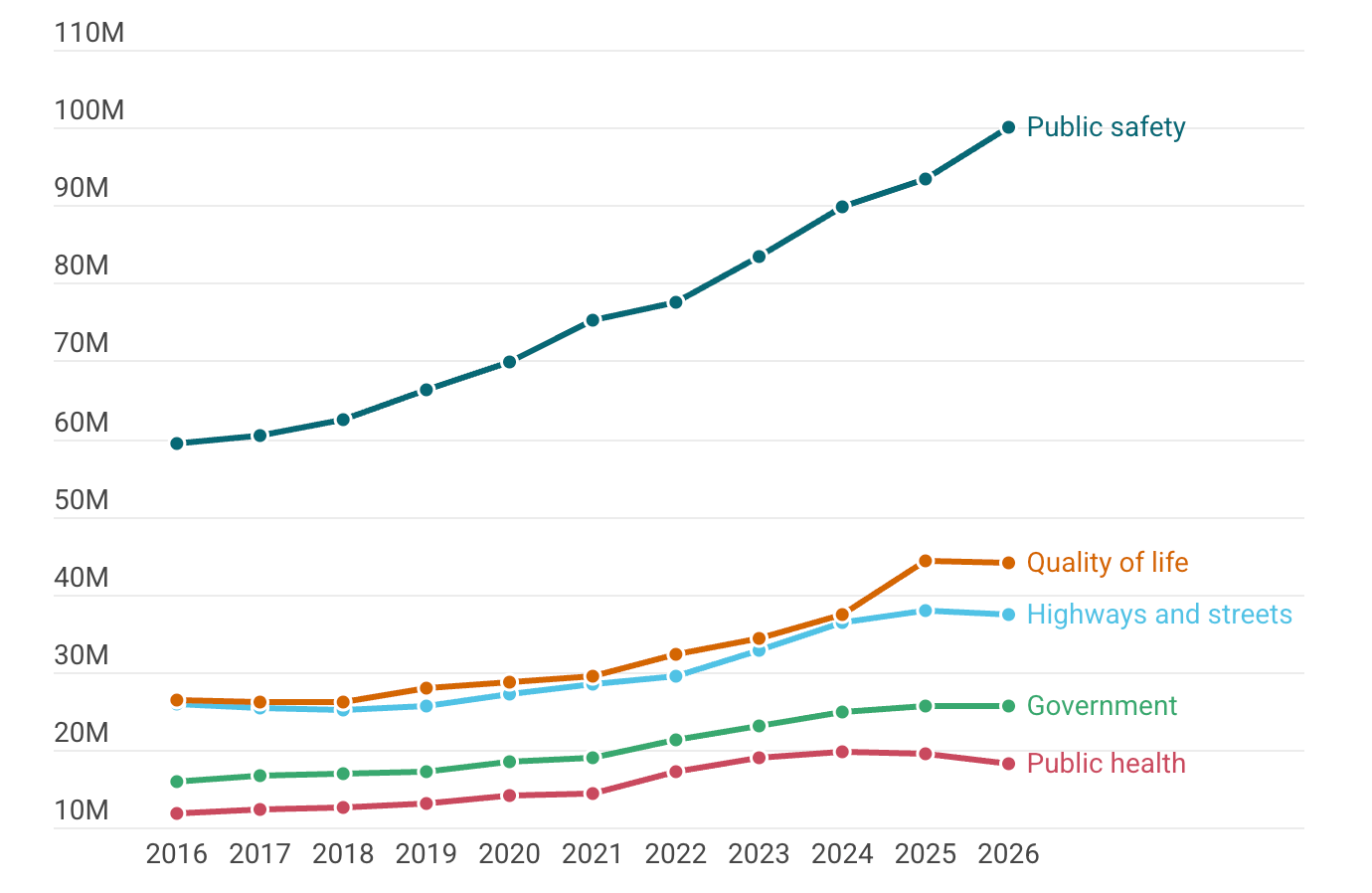Simplified: By nearly all metrics, the Sioux Falls police and fire departments have grown faster than both the population and the crime rate. Here’s a look at how public safety spending has increased over the last decade and how that trend is projected to continue into 2026.
Why it matters
- Public safety (police and fire) is the fastest-growing sector of city government. Annual spending has increased by 68% since 2016, and that’s before you take into account special projects like the new $55 million public safety campus.
- Certainly that growth is due, in part, to the significant population growth Sioux Falls has seen over that time. But, even when you account for a growing population, the city is spending more per capita on police and fire than it was a decade prior, according to budget analysis from Sioux Falls Simplified.
- Finance Director Shawn Pritchett attributes the increase to inflation and an increasingly competitive market for hiring police officers, which has also led to significant wage increases. The starting salary for police officers is projected to be more than $72,000 next year – an increase of about 47% since 2016.
- Meanwhile, Mayor Paul TenHaken is proposing an additional two dozen public safety employees as well as an approximately $1 million increase to overtime for police and fire departments in next year’s budget, despite his statements last month about the need for belt-tightening.
“As part of our recalibration efforts we’re also asking our public safety, police and fire, to look critically at their overtime costs and evaluate where they can potentially find efficiencies without risking the community’s safety,” TenHaken said.
But what about crime rates?
Both violent and property crime saw a five-year low in 2024 – the most recent data available – and the per capita crime rate has remained virtually flat over the last decade.
Overall calls per service went up about 25% between 2016 and 2024, but, again, when you account for population growth, the number of calls per capita has actually decreased over that time.
So, then why the increase in spending?
Public safety has been a primary focus of TenHaken throughout his nearly eight years as mayor. He has championed the police and fire departments, particularly during a time when there were calls in other parts of the country to defund police.
- At the time, TenHaken said calls to defund the police were “political puffery” and would “never be on the table” for Sioux Falls.
Instead, TenHaken has supported growing the department from 236 sworn officers when he first took office to 308 sworn officers proposed in 2026.
How has the budget changed overall?
Great question. The general fund has seen an overall increase of just over 59% since 2016. Here's a breakdown of that spending by department:
With more officers, why the need for increasing overtime?
Pritchett notes that the increase in the overtime budget is actually a move to align the budget with what the city is actually spending on overtime for public safety employees.
Overtime spending for police and fire has gone as much as $1.7 million over budget in recent years, according to Sioux Falls Simplified analysis.
“While it looks like we’re going up, we were just really bringing the overtime budget in alignment with actual (spending),” Pritchett said. “It’s more than what we’ve budgeted in the past but less than we’ve had for actuals.”
In previous years, the city was able to cover the over-budget overtime spending because the police department wasn't at full staff. Now, the department is at "full authorized strength," as TenHaken put it, for the first time in recent history.
"We can't count on open positions to fill that need (for additional overtime pay), so we have to get the actual budget in alignment," Pritchett said.
What happens next?
The mayor’s proposed budget now moves to the city council, who will hold a budget work session focused on public safety at 3 p.m. Tuesday, Aug. 12 at Carnegie Town Hall.
They’ll then continue to work on the budget throughout the month before a public hearing on Tuesday, Sept. 2.


